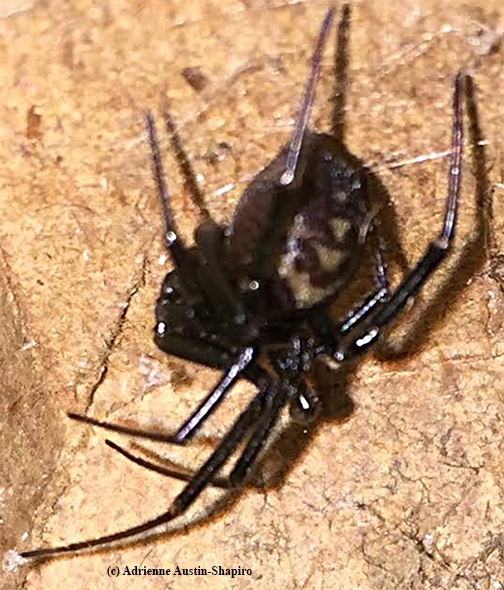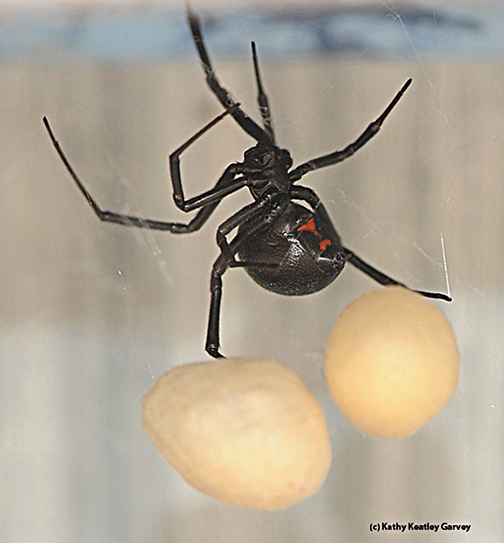This just in for Halloween!
Ever seen a false black widow spider?
Commonly known as the cupboard spider, it's a semi-cosmopolitan spider that's often confused with the "real" black widow spider, known for its powerful venom.
Adrienne Shapiro of Davis took this photo (below) of a spider on the Shapiro property (photographed and released). Her husband, Art, distinguished professor of evolution and ecology, identified it as a female false black widow, Steatoda grossa.
"The overall appearance is very similar to the real thing, except it lacks the red spot on the belly and usually--but not always--has some yellow patterning on the dorsal abdomen: a crescent-like line at the anterior end and a row of triangular spots down the midline, visible here," Shapiro commented.
"But a few may be all black, or the yellow is barely visible," he noted. "This is a semi-cosmopolitan species usually found in or around buildings. It's originally from the Mediterranean region and in the United States and is mostly urban-bicoastal, absent from the heartland. Its habits are nearly identical to the black widow. It's not very common and I personally have never seen it in Davis before. The bite of the female IS venomous, but not to the degree a true black widow bite is. The symptoms are usually local pain, redness and blistering, but some people report generalized malaise for up to a couple of days. I am unaware of any deaths or serious sequelae."
Steve Heydon, senior museum scientist at the Bohart Museum of Entomology, UC Davis, says he gets a few calls about the false black widow. "Steatoda mostly lives under things on the ground," he said, "while the black widows live a little bit off the ground."
We've never seen the false black widow, but have seen numerous black widows (genus Latrodectus.) One black widow homesteaded on the rim of our swimming pool several years ago and we managed to photograph Mama straddling her egg cases. The familiar red hourglass was definitely visible!
The black widow's bite, particularly harmful to people, contains neurotoxin latrotoxin, which causes the condition latrodectism, both named for the genus. Only the female bite is harmful. But the bite is rarely fatal to humans.
We watched Mama scurry around, seemingly trying to protect both egg cases simultaneously from the long-lensed camera.
She was like a Mama Grizzly protecting her cubs.
Attached Images:

